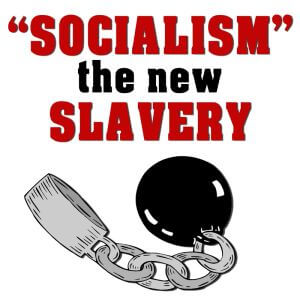 Paul Rosenberg – Very few things in human life are truly all or nothing. Almost everything works on a sliding scale, even slavery. The problem is, very few people have ever studied slavery, leaving them with a few emotional slogans instead of actual knowledge.
Paul Rosenberg – Very few things in human life are truly all or nothing. Almost everything works on a sliding scale, even slavery. The problem is, very few people have ever studied slavery, leaving them with a few emotional slogans instead of actual knowledge.
A Roman slave in a major city, for example, could start and run his own business, might be very rich, and might even become a major intellectual, like Epictetus. A Roman slave working in a mine… well… that was about as bad as it gets.
So, all-or-nothing representations of slavery are false and more often than not are propaganda. This being the case, a question sits in front of us: How enslaved are we? People sometimes get very upset over such questions, but not because they’re invalid. They get upset because they don’t want to confront such thoughts.
Believing that truth matters, however, I’ve decided to raise the question.
What Slavery Really Is
Slavery is a type of economic skim. It’s primarily an economic tool… surrounded by creative justifications, of course. A slave’s surplus (“profit” or “retained earnings”) is transferred to his or her owner. Physical control of the slave serves this purpose – to keep his or her surplus coming in. (We examined this in issue #32 of the subscription letter.)
So, if you keep all of your surplus, you are not at all economically enslaved. If you keep half of your surplus, you’re 50% economically enslaved.
But while slavery is primarily an economic thing, our freedom of action can be restricted as well, and that’s also a type of slavery. And like economics, freedom of action can be restrained partially rather than completely, and usually is.
Freedom – or liberty – on the other hand, is the state of being unrestrained.
So…
If what I’ve written above is true or even mostly true, we can experience various percentages of slavery. In fact, by clinging to the old, all-or-nothing propaganda regarding slavery, we end up deceiving ourselves.
Here, for example, is a very simple calculation of a slavery percentage:
African slave, Alabama plantation, 1830
- Economic slavery: 98%
- Choice (other than economic): 70%
- Overall slavery: 84%
In this case, the slave made very few economic choices – they could not trade among themselves – but they could usually do things like mate as they saw fit, which does, after all, matter. So, the net percentage came out to 84%. That’s still horrific, but it’s not “complete slavery.”
Here’s another example:
English serf, 1300 AD
- Economic slavery: 45%
- Choice slavery: 50%
- Overall slavery: 47.5%
This one is tricky. The serf owed his lord a number of days of labor per month, averaging at most a third of his time. For the rest of the time he could work his own land as he pleased, but he couldn’t simply leave.
Adding to the complexity, he had a medieval version of a retirement plan: After he was too old to work he was still allowed to eat and couldn’t be put out of his house.
So, I gave him a 45% for economic slavery and 50% for free choice, coming to 47.5% overall.
Two more examples:
American baker, 1890
- Economic slavery: 15%
- Choice slavery: 15%
- Overall slavery: 15%
During this period, the only taxes facing the working man were tarrifs and a few local extractions. (There’s a reason longshoremen and bakers were able to build grand houses in those days.) As for choices, there were social pressures on people, but that’s not slavery, as force was seldom used. Still, to be charitable, I’ve given that a 15% as well.
American plumber, 2016
- Economic slavery: 60%
- Choice slavery: 40%
- Overall slavery: 50%
The modern American loses 50% of his earnings at the state, local, and national levels. In addition, he or she loses a great deal of money in pass-through taxes, taxes that businesses pay and pass on to you. I went to 60% on this, but that figure may be low, as frightening as that may be.
As for choices, those are dying by the day. Hundreds of medical choices are now forbidden, many types of employment are forbidden without state-approved certificates (aka diplomas), and much, much more. So, I think my 40% figure is not high and may in fact be quite reasonable.
“Wait… Worse than Serfs?”
That’s the usual freakout response. But in terms of slavery, yes, it seems so. I agree that serfs didn’t have the technology we do, but machines don’t negate slavery. Keeping our surplus and making unopposed choices negate slavery.
And I think you can see by comparing the 1890 and 2016 calculations why standards of living and the development of new technologies skyrocketed during the 19th century.
Disagree?
It won’t bother me if you disagree; I haven’t spent months putting together unchallengeable numbers on all of this. Neither has anyone else, which is the problem. These are “back of the envelope” calculations.
But if you do disagree, don’t just pass it off. Have the guts to run the numbers on your own. Consider each of the points mentioned above, using honest, best-guess figures. Calculate, and face the conclusion head on.
SF Source Freeman’s Perspective Oct. 2016
[widget id=”text 44″]
